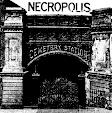ON THE THIRD NIGHT OF HALLOWEEN … I watched Häxan (1922), the seminal Swedish quasi-disquisition on witchcraft by Benjamin Christensen. I’ve seen clips of it before, but this is the first time I’ve watched the whole thing. It’s incredible! I think that more than even Nosferatu or The Cabinet of Doctor Caligari, Häxan pioneered much of the visual language of cinematic horror still in use today, particularly for exploitation. Nearly every shot is as masterfully composed and stuffed with mesmerizing details as a painting by Bosch or Brueghel.
In fact, Häxan’s introductory lecture incorporates period woodcuts depicting orgiastic witches’ sabbaths, the torture machines and human bonfires of the Inquisition, and the macabre monstrosities of hell per church doctrine. In some shots, our lecturer, Christensen himself (a ploy that would later be repeated by such classics of exploitative pseudo-documentary as Mondo Cane, Cannibal Holocaust, and Faces of Death), even uses his pencil to lovingly point out grisly details in these prints, such as a demon pouring hot lead into a sinner’s mouth. Most of these images are brought to life in what follows, sometimes fairly closely replicating their staging. And this is what makes Häxan still quite shocking today, and what caused it to be banned in many countries when it was released: in full graphic and often quite convincing detail, it shows us nude witches dancing and making out with demons, bloody infants thrown into boiling cauldrons, dismemberment and cannibalism, the birthing of hellish abominations, and the application of literal rack and scourge.
Following the introduction, the film in structure consists of a loose anthology of narratives, involving, first, a coven of old wisewomen reenacting archetypal scenes of witchery drawn from lore found in such sources as the Malleus Maleficarum and Armand Bénet’s Bibliothèque Diabolique; second, an inquisitorial tribunal that spirals into a frenzy of accusation, torture, spurious confession, mass hysteria, and fiery execution; and finally, more modern scenes of “nervous conditions” like sleepwalking, night terror, and kleptomania, so as to provide 1922 psychiatric medicine’s take on the underlying causes of the witch craze.
What we are supposedly meant to take away from all this is a thesis about the connection between superstition and mental illness, and how the humane treatment by scientific medicine of women and the elderly suffering from various infirmities that would have been labeled demonic in another age should supplant irrational religious persecution-- and so forth. But as in so many works of later exploitation cinema with solemn messages tagged on the beginning and end, the audience and the filmmaker both know that’s not really what the movie’s about. It’s about the titillation and shock of demonic orgies and medieval torture! Häxan is brilliant not only because it blazed the path for pretty much all exploitation horror that would follow, but also because it reveals that that had always been the purpose of those grisly woodcuts, paintings, and works of literature depicting hellish and damnable scenes, going back at least as far as Dante: they only ostensibly exist to instruct but really serve to give the audience a sensational jolt.





No comments:
Post a Comment